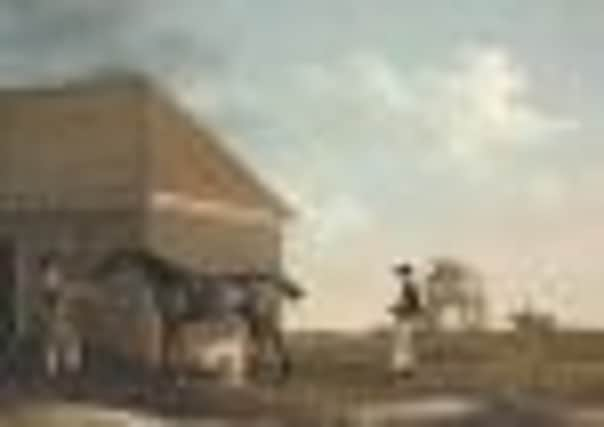A winner, by George


Nevertheless, the Liverpool-born artist’s stock has now risen to such an extent that he is favourite to join the world’s most elite Old Masters – with help from a little horse with a big heart and a thorough study of anatomy while living and working in Yorkshire.
A painting of Gimcrack, one of the greatest racehorses of the 18th century, winning 27 of his 36 races in a seven-season career, is expected to fetch more than £20m at Christie’s, in London, on July 5. That would double the existing world record for a work by Stubbs (current auction best is £10.1m for his 1767 painting, Brood Mares and Foals at Sotheby’s last year) and put him in a price bracket with a select group of Old Masters including Rubens, Rembrandt and Turner.
Advertisement
Hide AdAdvertisement
Hide AdGimcrack on Newmarket Heath, with a Trainer, a Stable-Lad, and a Jockey was executed in 1765 after being commissioned by the horse’s extravagant owner, Frederick St John, 2nd Viscount Bolingbroke. The horse, standing just 14.2 hands tall, won his last race in 1771.
The painting is making its third appearance at Christie’s. Sold by the Bolingbroke family in 1943, it was bought by Walter Hutchinson, founder of the National Gallery of British Sports and Pastimes, before being sold again, in 1951, when it made £12,600 and entered the collection formed by Lord Woolavington, a whisky magnate, philanthropist and successful racehorse owner.
It is undoubtedly an exceptional example of 18th-century painting but whether it is of sufficient quality and importance to deserve a photo-finish with the most valuable Old Master art works ever sold, may be open to question.
Stubbs, born in 1724 and one of five children of a leather worker, is often celebrated as the greatest artist-scientist since Leonardo da Vinci. After studying under the Warrington engraver, Hamlet Winstanley, he began his career in the 1640s as a barely recognised portrait painter, plying his trade first in Leeds, then in York, Wigan and Hull.
Advertisement
Hide AdAdvertisement
Hide AdHe studied human and animal anatomy in York and while there became so knowledgeable he was able to give private lessons to medical students at York Hospital.
In the late 1750s, he spent 18 months developing his skills as an anatomist in a farmhouse at Horkstow, on the North Lincolnshire side of the Humber, dissecting and drawing horses in preparation for the publication of his famous book, The Anatomy of the Horse.
The Gimcrack Stakes, at York, first run in 1846, is named after the horse, although none of Gimcrack’s victories came at York.